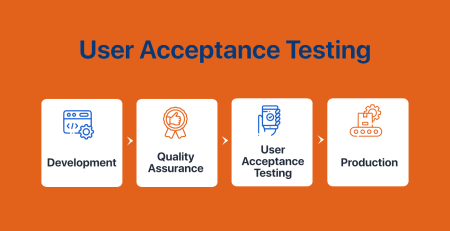Technical Skills Every Software Tester Should Master
DevOps has gained popularity as a methodology, and the modern software development cycle includes real-time updates and modifications, making testing an ongoing task.
In order to deal with rapid product releases, contemporary QA trends emphasize the usage of low-code/no-code testing solutions and CI/CD tools. The technical proficiency of testers must be improved, and they must even be “code-savvy.”
Therefore, in order to stay up with the evolving development cycle, testers or software testing specialists must increase their technical skills.
Six technical testing skills that every tester should know by 2022 were listed in the blog.
1. Software development lifecycle management skills
To better comprehend application development tasks and schedule testing cycles, quality testers should strengthen their software lifecycle management abilities.
An in-depth understanding of the SDLC cycle aids in anticipating application complexity and can direct developers to take the appropriate steps in advance.
The customer’s voice is represented by the tester in the SDLC. They help the product owner and the development team focus in the correct places by facilitating early clarification of the intended outcome since they are aware of what the end user expects from the software product.
2. Agile Methodology
The method to software testing must change as the complexity of the software development process continues to rise.
Agile testing is more effective when software product development is split up into numerous deliverables since it gives an iterative development technique. The team may incorporate end-user feedback while developing the software, allowing the software product to advance continuously.
Some of the skill sets that a tester needs to have are:
- A practical understanding of the principles of Agile software development methodology
- Ability to generate new test cases whenever a code is updated
- Ability to work in a collaborative environment and respond quickly to the changing customer needs
- Ability to complete testing work in a shorter time slot, also called sprints, to meet the deliverables
- Ability to predict possible errors and bugs for new builds
- Ability to exercise regression testing throughout the software development lifecycle
3. Create a comprehensive test plan
The test strategy, timetable, deliverables, budget, and resources needed to test a software product are all thoroughly described in the test plan’s accompanying documents.
Test planning and documentation skills are crucial for every tester since they aid in finding the correct requirements and taking the required actions. The test plan acts as a guide to carry out software testing activities as a defined procedure.
This ability also aids in tracing deviations, monitoring test procedures, keeping track of requirement changes, and reporting and tracking tasks.
Test planning and documentation skills are essential for all testers to master since they can assist both individuals and businesses in allocating the proper money and resources to a project.
Understanding of the test automation tool
There are several reasons why testers should adopt automated testing. A few of them are listed below:
- Ensure continuous testing across SDLC
- Automate test cases that are repetitive
- Automate test cases that are highly critical and need keen observation
- Automate test run on several different hardware or software platforms
Testers can now expedite the execution of test cases, write code once, and have it run forever thanks to the introduction of no-code/low-code test automation tools.
Automated testing is approx. 70% faster than manual testing, meaning that you can run more tests to ensure better code quality and achieve faster time to market.
Medium.com
By enabling the tester to finish testing for several builds in a sprint, in-sprint automation provides quicker execution times.
Different automation technologies, however, each have their strengths and weaknesses; in contrast, open-source tools like Selenium require the tester to have coding abilities and a solid grasp of Java, Python, and other scripting languages.
However, using a drag-and-drop capability provided by a no-code testing solution like TestingWhiz, testers may generate test cases without the requirement for advanced coding knowledge.
5. Knowing what and when to automate
Knowing how to use a test automation tool is not sufficient; the tester also has to understand what and when to automate.
Only repeatable test cases can benefit from automated testing; for example, automating regression test cases can be advantageous.
Manual labor should be used for tasks like exploratory testing that call for quick decision-making.
Additionally, manual testers should be given test scenarios that require subjective validation.
6. Reporting
A skilled tester must also have strong reporting abilities. The tester must give a precise update on the project and application under test given the involvement of various stakeholders. The top management is provided with the necessary transparency through this reporting procedure. assisting the group in finding bugs earlier in the development process.
The testers should be able to make test reports manually or use tools that come equipped with the capacity to produce thorough test reports.
For instance, a tester can generate real-time data from a single interface on the status of desktop, mobile, or web functional, API test, and database tests.
Conclusion:
No matter how many years of experience they have, testers should constantly work to advance their knowledge and skills in software testing. Testers should continuously learn cutting-edge techniques, methodologies, and processes to increase testing performance, keep using the new abilities, and help them stay ahead of the competition, whether they do so through self-learning or participation in a training program.
Tell us what you think. Please feel free to contribute in the comments section provided below.













Leave a Reply